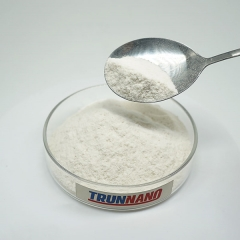Technical Parameters of Powdered Immediate Salt Silicate (CAS 1344-09-8)
(Technical Parameters of Powdered Instant Sodium Silicate (CAS 1344-09-8))
Keep in mind: We can likewise customize salt silicate powder with moduli of 2.45, 2.5, and 3.4 according to your needs.
Our Range of Sodium Silicate Moduli
We offer powdered split second salt silicate with moduli varying from 2.0 to 3.3. In addition, we can tailor sodium silicate powder with moduli of 2.45, 2.5, and 3.4 to satisfy your particular requirements.
Intro
In an era where ecological sustainability and security are significantly prioritized, sodium silicate, additionally known as water glass or soluble glass, has ended up being a subject of considerable passion across different industries. This flexible inorganic substance is vital in building, paper manufacturing, and the formulation of detergents. The steady phase-out of traditional phosphorus-based cleaning agent ingredients, such as salt tripolyphosphate (STPP), due to their dangerous effect on water atmospheres, has actually developed a pressing demand for efficient and eco-friendly options. Sodium silicate, with its special residential properties, has emerged as a feasible and attractive choice.
Market Prospective
2.1 Global Demand Fads
The international market for concentrated synthetic cleaning agents is experiencing constant development, particularly with the raising popularity of ultra-concentrated powders. In 2000 alone, it was approximated that at least 230,000 tons of sodium silicate were needed to meet the demand. Given the existing minimal worldwide supply, there is a notable space in between supply and need, indicating significant growth potential. As consumers progressively seek top quality and environmentally friendly items, the market for salt silicate is expected to increase dramatically.
2.2 International Competitive Placement
Chinese-produced sodium silicate frequently offers an extra competitive cost and comparable, otherwise superior, top quality contrasted to comparable products made globally. For example, the FOB rate of salt silicate in the United States is around $51.15 per 100 pounds, while costs in Europe are also higher. This price benefit placements Chinese manufacturers positively in the global market. By continually introducing and boosting product quality, Chinese producers have the chance to catch a bigger share of the worldwide market.
Summary of Sodium Silicate
Salt silicate is a substance made up of silicon dioxide (SiO ₂) and sodium oxide (Na ₂ O), normally represented by the formula Na ₂ O · nSiO ₂, where n varies depending on the certain type. It is understood for its good solubility, high pH level, and excellent cleansing residential or commercial properties, making it an ideal additive for cleaning agents. Beyond its use in cleaning agents, sodium silicate is extensively utilized in the construction sector, such as in waterproofing materials and sealants. In the paper sector, it boosts the stamina and level of smoothness of paper. Additionally, it locates applications in fabric dyeing, oil extraction, and various other markets.
Production Process
1. Preparation of Raw Products: The procedure begins with the option of suitable raw materials, consisting of silica sand or soluble glass, in addition to caustic soft drink.
2. Dissolution Phase: The raw materials are blended and warmed to a suitable temperature level to facilitate dissolution, making certain comprehensive mixing of all elements.
3. Formation Control: Details conditions are controlled to promote the development of preferred crystal frameworks in the solution. Temperature level and stress parameters should be specifically taken care of throughout this stage.
4. Filtration and Purification: A plate and framework filter press is made use of to eliminate excess dampness and impurities, therefore guaranteeing the end product’s pureness.
5. Drying out and Creating: Spray drying modern technology is used to reduce the wetness web content better, leading to a powder form that is easy to store and transport.
Financial Evaluation
From a financial point ofview, the manufacturing of salt silicate presents clear advantages. For a plant with a yearly capacity of 5,000 tons, the price failure is as complies with:
1. Variable Expenses: About $346.71 per heap, which includes basic materials (silica sand/soluble glass and caustic soft drink), energy usage (electrical power and gas), and labor costs.
2. Fixed Costs: Around $141,400 yearly, covering depreciation of set assets, maintenance, management charges, car loan interest, and other expenditures.
3. Total Costs: The mixed total expense is estimated at $385.71 per bunch.
4. Sales Profits: With an estimated market price of 642.86 perton, theprofitmarginpertonwouldbeapproximately642.86 perton, theprofitmarginpertonwouldbeapproximately257.15.
5. Economic Perks: The project could create yearly earnings of around 3.21 million, contributingroughly3.21 million, contributingroughly1.29 million in tax earnings.
This financial evaluation shows that sodium silicate not just offers substantial technical advantages but is also extremely financially feasible. For making business, investing in the manufacturing and promotion of salt silicate can produce significant economic returns while enhancing their company social responsibility image.
( sodium silicate)
Conclusion
In summary, salt silicate, with its premium technological performance and low production prices, holds wonderful possible as a replacement for standard phosphorus-based additives. As ecological policies become stricter and customer need for high-quality, eco-friendly products grows, speeding up the research, growth, and commercialization of salt silicate will certainly be critical for transforming the global detergent market. For financiers, entering this area not only sustains business social responsibility but additionally promises attractive financial returns and social advantages. With recurring technological advancements and an increasing market, the potential uses of salt silicate are substantial and quality more expedition and advancement by industry stakeholders and study institutions.
Top quality Salt Silicate distributor
TRUNNANO is a supplier of Sodium Silicate Materials with over 12 years of experience in nano-building energy conservation and nanotechnology development. It accepts payment via Credit Card, T/T, West Union and Paypal. Trunnano will ship the goods to customers overseas through FedEx, DHL, by air, or by sea. If you want to know more about 1344-09 8, please feel free to contact us and send an inquiry(sales5@nanotrun.com).
All articles and pictures are from the Internet. If there are any copyright issues, please contact us in time to delete.
Inquiry us






